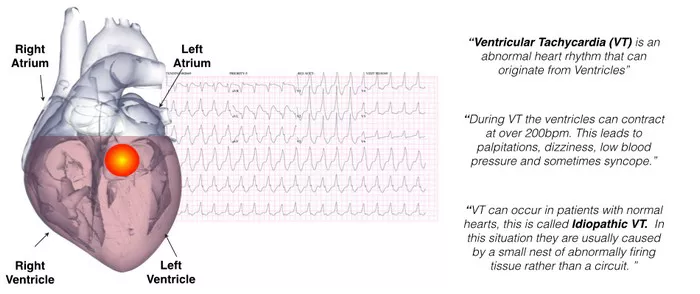The human heart, a marvel of biological engineering, orchestrates a complex symphony of electrical impulses to sustain life. Yet, like any sophisticated system, it is not immune to disorders that disrupt its rhythm and harmony. Among these, Long QT Syndrome (LQTS) stands out as a condition that, although rare, underscores the intricate balance between life-sustaining electrical activity and the peril of arrhythmias. This article delves into the essence of Long QT Syndrome, exploring its origins, manifestations, diagnosis, and the strides made in treatment and management.
Understanding the Fundamentals of Long QT Syndrome
Long QT Syndrome is a cardiac disorder characterized by an abnormal prolongation of the QT interval—a measure of the heart’s electrical cycle seen on an electrocardiogram (ECG). This anomaly reflects a delay in the heart muscle’s recovery after each beat, predisposing individuals to a spectrum of arrhythmias, most notably Torsades de Pointes, which can lead to sudden cardiac arrest.
The condition can be congenital, stemming from genetic mutations affecting cardiac ion channels, or acquired, resulting from certain medications, electrolyte imbalances, or medical conditions. With an estimated prevalence of 1 in 2,500 to 1 in 7,000 people, LQTS is a hidden peril, often asymptomatic until an arrhythmic event occurs.
Delving into the Genetics and Pathophysiology of LQTS
At the heart of congenital LQTS are mutations in genes responsible for the proteins that form ion channels. These channels control the influx and efflux of ions like potassium, sodium, and calcium, crucial for the cardiac action potential. To date, mutations in over 15 genes (LQT1 to LQT15 and beyond) have been identified, with LQT1, LQT2, and LQT3 being the most common, linked to potassium and sodium channels, respectively.
The genetic diversity of LQTS explains the variability in clinical presentation and response to treatment. For instance, patients with LQT1 are more prone to arrhythmias during exercise, whereas those with LQT2 may experience events during emotional stress or auditory stimuli. This genotype-phenotype correlation is pivotal in tailoring management strategies for affected individuals.
Clinical Presentation and Diagnosis
The clinical manifestation of LQTS can range from palpitations, syncope (fainting), and seizures to sudden cardiac death, often in young, apparently healthy individuals. Diagnosis is primarily based on the QT interval measurement on the ECG, adjusted for heart rate to calculate the QTc using Bazett’s formula. A QTc exceeding 470 ms in men and 480 ms in women is suggestive of LQTS, though diagnosis can be challenging due to overlap with normal ranges and the influence of other factors like medications.
A detailed family history, genetic testing, and stress testing are also integral components of the diagnostic process, offering clues to the underlying genetic subtype and susceptibility to arrhythmias under certain conditions.
The Therapeutic Landscape: Managing Long QT Syndrome
Management of LQTS is multifaceted, aiming to prevent arrhythmic events and sudden death while minimizing the impact on quality of life. Treatment strategies are tailored based on the genetic subtype, severity of symptoms, and risk factors for arrhythmias.
Beta-Blockers: The First Line of Defense
Beta-blockers are the cornerstone of therapy for LQTS, significantly reducing the risk of arrhythmias, particularly in LQT1 and LQT2 patients. These medications work by diminishing sympathetic stimulation of the heart, thereby reducing the likelihood of prolonged QT intervals leading to arrhythmias.
Lifestyle Modifications and Avoidance of QT-Prolonging Agents
Individuals with LQTS are advised to avoid certain activities that may trigger arrhythmias, such as competitive sports for LQT1 or loud noises for LQT2. Additionally, a critical aspect of management is the avoidance of medications known to prolong the QT interval, as these can exacerbate the condition.
Potassium Supplementation and Mexiletine
For specific subtypes like LQT2, potassium supplementation can help shorten the QT interval. Mexiletine, a sodium channel blocker, is particularly effective in LQT3 patients by mitigating the prolonged sodium influx characteristic of this subtype.
Implantable Devices and Surgical Interventions
In high-risk patients or those who experience arrhythmias despite medication, implantable cardioverter-defibrillators (ICDs) offer a lifeline by providing immediate correction of life-threatening arrhythmias. Left cardiac sympathetic denervation, a surgical procedure removing sympathetic nerves from the left side of the heart, is another option for refractory cases, shown to reduce arrhythmic events and ICD shocks.
The Role of Genetic Testing and Family Screening
Given the hereditary nature of congenital LQTS, genetic testing plays a crucial role in identifying at-risk individuals within affected families. Early identification through family screening allows for preemptive management and lifestyle adjustments, significantly reducing the risk of arrhythmic events in asymptomatic carriers.
Looking to the Future: Research and Innovations
The quest for a deeper understanding of LQTS and improved management strategies is ongoing. Research into gene-specific therapies, such as gene editing and modulation of gene expression, holds promise for a more personalized and effective approach to treatment. Additionally, advancements in wearable technology and remote monitoring offer new avenues for detecting arrhythmias and intervening before catastrophic events occur.
Conclusion
Long QT Syndrome is a reminder of the fragile balance underlying cardiac electrophysiology and the importance of vigilance in recognizing and managing arrhythmic disorders. Through continued research, patient education, and advancements in genetic testing and treatment modalities, the prognosis for individuals with LQTS has never been better. However, the key to further improving outcomes lies in raising awareness among healthcare providers and the public, ensuring early diagnosis, and adopting an individualized approach to management that addresses the unique risks and needs of each patient.

